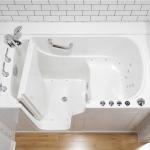Useful Tips for Setting Up Care Facilities Effectively
In the dynamic field of care home management, creative organisational strategies are essential for improving productivity and the quality of life for residents. This paper explores many approaches to enhance care home organisation, with particular emphasis on sophisticated labelling systems, resident participation, technology integration, and space utilisation.
Taking Care of Organisational Issues
1. Promoting Participation of Residents
Incorporating residents into the arrangement of their personal areas can improve their feeling of community and control. Encouraging inhabitants to customise their rooms and make design contributions to shared areas promotes self-sufficiency and contentment.
According to research published in the Journal of Applied Gerontology, residents' wellbeing can be greatly enhanced when they participate in decision-making processes.
2. Using Technology to Improve Management
Digital tools are revolutionising care home management. Implementing digital inventory systems, electronic health records, and scheduling software can streamline operations. A study by Deloitte found that integrating digital solutions can increase productivity by up to 20% in healthcare settings.
3. Implementing Advanced Labelling Systems
Effective labelling of personal items, particularly clothing, is crucial in preventing loss and ensuring items are easily identifiable. Modern labelling techniques such as RFID tags and durable care home labels are durable and reliable. According to the Journal of Geriatric Care, implementing advanced labelling can reduce the incidence of lost items by 50%.
4. Establishing Routine Schedules
Routine schedules for daily activities, including meal times, cleaning, and recreational activities, help maintain an orderly environment. Consistent routines reduce confusion and ensure efficient task completion. The British Medical Journal highlights that regular schedules can alleviate stress for both residents and staff.
5. Promoting Eco-Friendly Operations
Adopting eco-friendly practices in care homes can reduce environmental impact and operational costs. Using energy-efficient appliances, biodegradable cleaning products, and recycling programmes are effective strategies. The World Health Organization (WHO) states that sustainable practices improve indoor air quality and resident health.
6. Enhancing Communication with Staff
Clear and consistent communication between staff members is essential for smooth operations. Regular meetings, briefings, and the use of communication tools can help ensure that all staff are on the same page, reducing misunderstandings and improving overall efficiency. Effective communication is also critical during shift changes to ensure continuity of care.
7. Utilising Multi-Functional Spaces
Designing multi-functional spaces within care homes can help maximise the use of available space. For example, a room can be used for social activities during the day and as a dining area in the evening. This flexibility helps make the most of limited space and provides various environments for residents to enjoy.
Case Studies and Examples
Greenfield Care Home: A Model of Efficiency
Greenfield Care Home implemented a combination of modular furniture and digital management systems. This approach led to a 30% increase in usable space and a 20% improvement in staff productivity. By involving residents in the redesign of communal areas, Greenfield also reported higher resident satisfaction scores.
Tech Integration at Meadowview Nursing Home
Meadowview Nursing Home adopted a comprehensive digital inventory and scheduling system. Staff reported a significant reduction in administrative tasks, allowing more time for direct resident care. This integration of technology also improved the accuracy of medication administration and inventory tracking.
Conclusion
By embracing innovative organisational practices such as optimising space, using digital management systems, involving residents, maintaining routine schedules, implementing advanced labelling systems, promoting eco-friendly practices, and enhancing communication among staff, care homes can significantly improve their efficiency and quality of care. These strategies not only enhance operational effectiveness but also contribute to a more comfortable and supportive environment for residents.
References:
More to Read:
Previous Posts:
Next Posts:




